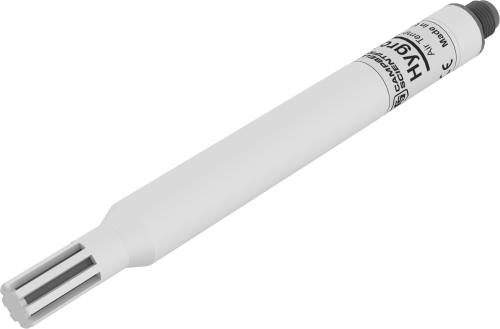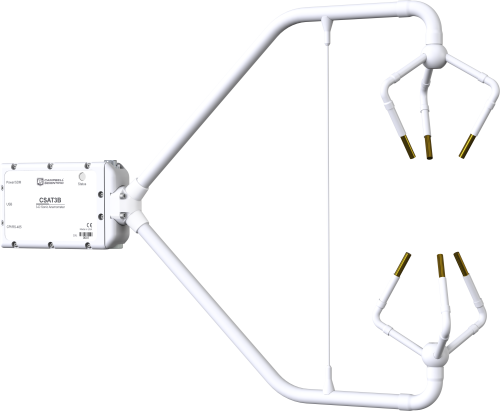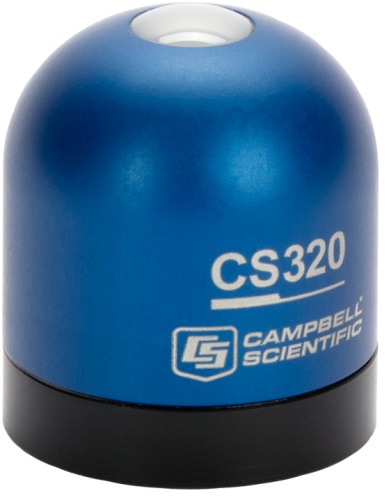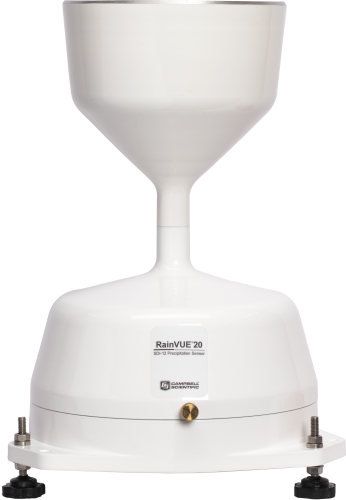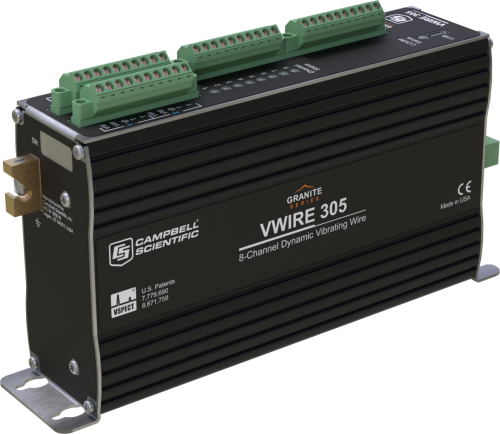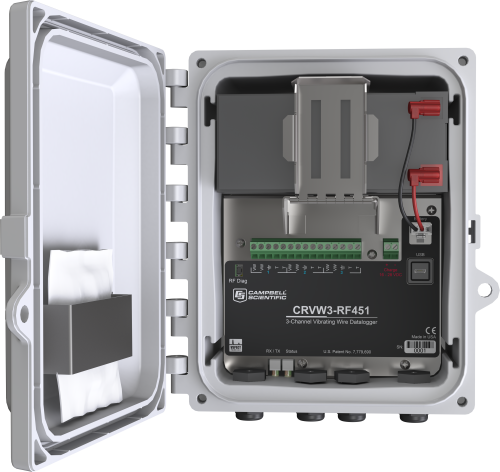私たちがお手伝いできること
カスタマイズシステム
関連する製品カテゴリ
詳細について: Historical Preservation システム
Indoor Historical Preservation Sites
At indoor sites such as museums, our systems can monitor relative humidity, temperature, light, CO2, particulate matter, and many other parameters. Data can be transmitted to a central computer for real-time display or archival and analysis. Automated control based on the measured parameters is also possible. For example, if temperature levels are outside a preset range, the system can activate or shut down HVAC equipment. Alarms can also be triggered or phone numbers dialed to alert key personnel. Our voice-synthesized phone modems can even call and verbally inform you if a problem is detected.
Outdoor Historical Preservation Sites
At outdoor sites, weather stations provide valuable meteorological data on relative humidity, wind speed and direction, temperature, solar radiation, precipitation, and other weather conditions. Parameters influencing structural integrity such as crack size, tilt, vibration, and soil moisture can also be monitored. Indoor and outdoor systems at the same site can be networked.
Monitoring and Control
Our systems are based around battery-powered, programmable dataloggers (measurement and control units) that measure the sensors, then process, store, and transmit the data. Each datalogger has multiple channel types, allowing nearly all sensor types to be measured by a single unit. For example, light, air temperature, and relative humidity sensors can all be measured simultaneously by the same datalogger. Using multiplexers, one datalogger can measure hundreds of sensors. Multiple dataloggers at a site can be networked and transmit data to a single central computer for display, analysis, or archive.
Statistical and mathematical functions are built into our dataloggers, allowing data reduction at the measurement site. For example, if temperature measurements are taken in 10 minute intervals, the datalogger can process the data and output hourly averages with maximum and minimum temperatures. This provides the needed information in fewer numbers, simplifying the data analysis or review process. Measurements can be recorded for historical analysis and displayed in real-time in the desired units of measure (e.g., °F, °C, °K, etc.).
Because our dataloggers are programmable, they are capable of performing responsive measurement and control sequences. Powerful on-board instruction sets allow unattended measurement and control decisions based on time or conditional events. This includes activating or shutting down equipment, sounding alarms, or calling out to phones or pagers. Our systems can even perform functions based on multiple conditions or events, such as deciding to increase or decrease air exchange based on time of day, outside temperature, and/or inside temperature.
The reliability of our control units ensures collection of time-stamped data, even under adverse circumstances. Because they have their own power supply (alkaline or rechargeable batteries), the dataloggers continue to measure and record existing conditions during power outages. Time-stamped data provides valuable information for identifying and verifying past events.
Sensors used in Historical Preservation
We manufacture many sensors ourselves and offer a wide variety made by other manufacturers. Since our dataloggers are compatible with most available sensors, you have the flexibility to customize a monitoring system to your site.
Communications
Systems can be monitored and controlled by an on-site or remote computer. Telecommunications options for transmitting data and/or reporting conditions of remote sites include: radio, telephone, cellphone, voice-synthesized phone, and satellite. Options likely to be used at sites near the central computer include ethernet and coaxial cable. Options in a network can be mixed. If you want, you can even automate the process of putting your data on the Internet.
ドキュメント
ケーススタディ
概要 ショーヴェ=ポンダルク洞窟とアヴァンドルニャック洞窟には、芸術的、技術的に類まれな美しさを誇る先史時代の宝物が眠っています。洞窟を飾る絵画や彫刻は 360 世紀も前のもので、現在知られている遺跡の中でも最古の部類に入ります。これらの洞窟の並外れた重要性から、ユネスコの世界遺産に登録されました。1994 年に発見されてすぐに、洞窟の自然環境を保護し、訪問や研究による影響を最小限に抑えるための予防保全措置が講じられました。保存を確実にするためには、微気候パラメータの制御が不可欠であり、高精度の気象監視が必要です。 解決策 Campbell Scientific は、これらの複雑な課題に対応する完全なソリューションを提供しました。ショーヴェ ポン ダルク洞窟とアヴァン ドルニャック洞窟にはセンサー システムが設置され、CR3000 計測および制御データロガーを使用して温度、気圧、CO2 などのパラメーターを測定しました。地上では、降雨量、温度、気圧などの屋外パラメーターを測定するために CR1000 計測および制御データロガーが設置されました。さらに、CR3000 と同じセンサーを備えた同一のミラー......続きを読む
概要 シャアリス修道院の王室礼拝堂は、しばしば「フランスのシスティーナ礼拝堂」と呼ばれ、フランスの絵画遺産の宝庫です。サン=ルイ(ルイ9世)の治世中に建てられ、1545年以降、イタリアの巨匠プリマティッチオによって見事なフレスコ画が描かれました。フレスコ画と正面ファサードの記念碑的な受胎告知は、並外れた芸術的アンサンブルを形成しています。しかし、長年にわたる湿気により、これらの芸術的宝物は劣化し、その完全性が脅かされています。 課題 19世紀と 2006 年に行われた修復でフレスコ画はかつての輝きを取り戻しましたが、湿度が高すぎるという問題は依然として残っており、絵画は劣化の危険にさらされ続けています。2023 年、シャリスの所有者であるフランス学士院は、この歴史的建造物をかつての輝きに修復するプロジェクトに着手しました。主な課題の 1 つは、修復作業をより適切に準備するために、礼拝堂内の温湿度条件、特に壁画と大気の境界面の詳細な理解を得ることでした。 解決策 Campbell Scientific は、ADTN と提携して GECONSEIL と協力し、これらの温湿度条件を監視するという複雑な課題に取り組みました。この協力により、Chaalis 王立礼拝堂内の条件を包括的に記録する計測監視システムが実装されました。 ソリューションには、Campbell Scientific の次の要素が含まれていました。 CR1000X計測・制御データロガーはデータを収集・保存し、礼拝堂の内部状況を綿密に監視します。 HMP155A-L......続きを読む
ショーヴェ洞窟の絵画や彫刻は、並外れた芸術的、技術的洗練性を示すだけでなく、知られている中で最も古いもの(360 世紀)でもあります。これらの遺物は壊れやすいにもかかわらず、洞窟の保護された環境の中で完璧に保存されています。この先史時代の洞窟は並外れた関心を集めているため、ユネスコの世界遺産リストに追加されました。 1994 年に洞窟が発見されて以来、洞窟とその外部環境の自然条件を保護するための保護活動が行われてきました。その目的は、洞窟の微気候への影響を制御するために環境条件を継続的に測定しながら、開発と現地訪問を研究に厳密に必要なものに限定することでした。堅牢で正確、高解像度の測定機器を使用することで、信頼性の高い記録データにより、ベンチマークを確立し、自然の変化を監視し、起こり得る気候の変化に注意を払うことができます。 ショーヴェ洞窟の微気候モニタリングは、洞窟内のセンサー システム (温度、気圧、CO2) が CR3000 データロガーにネットワーク接続されて行われます。地上では、Campbell Scientificの気象ステーション (降雨量、気温、気圧センサーを備えた CR1000 データロガー) が外部パラメータを測定します。7 km 離れたアヴァン......続きを読む
1922 年、エジプトの王家の谷でツタンカーメンの墓がそのままの状態で発見されたとき、墓には財宝、美術品、その他の遺物が満載でした。考古学者が発見した他の墓のほとんどでは、保存専門家が保護する前に、これらの品々は盗まれたり破壊されたりしていました。ツタンカーメンの墓のほとんどの内容物はカイロの博物館に移されましたが、ミイラ、珪岩の石棺とその花崗岩の蓋、壁画は訪問者が楽しめるように現地に残されています。現在、この墓は王家の谷で最も訪問者が多い場所の 1 つです。 墓の壁はツタンカーメンの死後の世界への旅を描いた貴重な壁画で覆われているが、時が経つにつれ、絵画は劣化し始めていいます。2009年、エジプトの最高考古評議会(現在はエジプト観光考古省)とゲッティ保存研究所は、訪問者が墓の状態に与える影響を評価し、管理するための多段階計画で協力しました。主な課題は、墓の状態、毎日の訪問による悪影響、壁画やその他の残存遺物に対する環境リスクを理解することでした。プロジェクトの計画は、墓内のセンサーと墓の外にある気象観測所からデータを収集し、分析することでした。 当初は、墓の入り口近くに電池式の自動気象観測所が設置され、気温、相対湿度、日射量、風速と風向、降雨量など、墓所の一般的な気候を監視していました。墓の内部には、内部の気温、相対湿度、露点温度、二酸化炭素濃度などの微気候条件を監視するセンサーが設置されていました。 頻繁なデータ分析を可能にするために、携帯電話モデムとデータロガーを使用して、プロジェクトの本部であるゲッティ保存研究所のロサンゼルス事務所にデータを送信しました。その後、データはプロジェクトの Web サイトに自動的に掲載されました。 データの分析により、墓への空気の流入と流出が不足していることが、相対湿度の上昇につながっていることが分かりました。墓への頻繁な訪問者も、二酸化炭素濃度が高く、内部の気温と相対湿度が急激に変動する不安定な微気候の一因となっていました。さらに、この人気の高い場所への頻繁な訪問 (歩行者) と風により、空中に浮遊する微粒子 (ほこり) が墓内に入り込みやすくなりました。これらの要因は、今度は壁画やその他の遺物の劣化につながりました。2013 年に、プロジェクトの初期データ収集フェーズが完了した後、元のシステムは解体されました。 プロジェクトの次の段階では、ゲッティ保存研究所とエジプト観光遺跡省のメンバーがデータを分析し、この史跡の保存における訪問者と環境への影響を管理する戦略を策定しました。墓の環境条件を安定させ、ほこりの量を減らすための取り組みには、フィルター付き空気供給および排気換気システムの導入、およびインフラストラクチャの改善が含まれていました。 2016 年、フィルター付き空気供給の換気システムが設置された後、絵画やその他の工芸品の保存状態と適用された保存対策の有効性を確認するために、第 2 段階のモニタリングが開始されました。キャンベル......続きを読む
オーストラリアの歴史的過去の象徴であるモーソンズ ハットは、1911 年から 1914 年にかけてのオーストラリア南極探検隊に関連する 4 つの歴史的な小屋構造物とその他の遺物のうちの 1 つです。モーソンズ ハットは、南極探検の英雄時代と呼ばれる時代に建てられた、オーストラリア唯一の例であり、現存する 6 つの国際的な複合施設の 1 つとして、国際的および国内的に重要な意味を持っています。 モーソンズ ハットがあるケープ......続きを読む
1990 年 5 月にスフィンクスの裏側に設置されたCampbell Scientificの気象観測所は、古代の建造物の修復と保存に必要な環境データを提供しました。この観測所で測定されたパラメータには、風速と風向、気温、相対湿度、降水量などがあります。1 年間の監視で収集されたデータでは、相対湿度と気温の変動が予想よりも大きかったことがわかりました。また、この観測所では予想よりも高い風速も測定され、北西風が風食の主な原因であることを特定するのに役立ちました。...続きを読む
敦煌(人口 10 万人)はゴビ砂漠の南西端にあり、中国北西部の甘粛省の北京から西に約 1,100 マイルのところにあります(北緯 40.05 度、東経 94.45 度)。敦煌の近くには莫高窟(標高約 5,000 フィート、年間降水量 25 mm)があります。気候は温帯大陸性で、夏は暖かく乾燥し、冬は寒いです。気温は 7 月の平均で......続きを読む
フロリダ州セントオーガスティンのカスティーヨ デ サン マルコス国定公園は、17 世紀の歴史的、文化的、構造的、土木工学的なランドマークです。公園管理者のゴーディ ウィルソンは、国立公園局の南東地域と協力して、砦での長距離監視活動を開始しました。目標は、200 年にわたって砦の壁の一部を悩ませてきた移動とその結果生じた亀裂の原因をより深く理解することです。 砦の稜堡は土を盛った石積みの城壁で、浅い基礎の上に建てられています。4 つの稜堡のうち 2 つには、1800 年代初頭から亀裂が見られます。基礎と土壌支持力の両方を徹底的に調査した結果、砦の基礎は構造的に健全であるはずです。壁の構造は土を盛る限界に近づいているという説が浮上しています。雨水の浸入により壁の内部負荷が増加し、構造が移動する可能性があります。この説を調査するために設計チームが結成されました。建築家 Grieves Worrall Wright &......続きを読む
よくある質問
Historical Preservationに関するよくある質問の数: 1
-
Campbell Scientific のシステムのほとんどは、個別のコンポーネントから構築されています。これにより、お客様に最大限の柔軟性が提供されますが、「一般的な」システムの価格設定には適していません。アプリケーションの固有のニーズを満たすシステムの価格設定については、Campbell Scientific にお問い合わせください。
インテグレーターとコンサルタント
Privacy Policy Update
We've updated our privacy policy. 詳細はこちら
Cookie Consent
Update your cookie preferences. クッキーの設定を更新する





